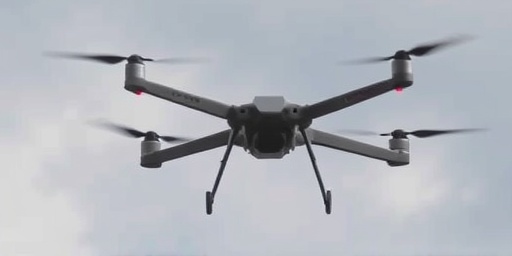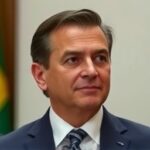In a brazen escalation of hostilities, Russia unleashed a massive drone attack on Ukraine overnight, deploying over 100 drones and a ballistic missile that targeted critical infrastructure across multiple regions. The assault, which occurred as the United States intensifies pressure on Kyiv to accept a controversial peace plan involving significant territorial concessions, has left Ukrainian defenses stretched thin and international allies reeling.
The strikes, confirmed by Ukraine’s Air Force, resulted in widespread power outages and damage to energy facilities in the capital Kyiv and western cities like Lviv and Kharkiv. At least three people were killed, and dozens injured, according to preliminary reports from local authorities. This drone attack marks one of the largest single-night barrages since the full-scale invasion began in February 2022, underscoring Moscow’s unwillingness to de-escalate even as diplomatic overtures gain momentum.
Amid the chaos, the US peace plan has emerged as a flashpoint in transatlantic relations. Leaked details suggest the proposal would require Ukraine to cede control of Crimea and parts of the Donbas region to Russia in exchange for a ceasefire and security guarantees. President Joe Biden’s administration has reportedly urged Ukrainian President Volodymyr Zelenskyy to consider the deal during private talks, citing war fatigue and the need to prevent further Russian advances. However, the plan has blindsided European leaders, who view it as a premature capitulation that undermines years of support for Ukraine’s sovereignty.
Russia‘s Drone Onslaught Targets Ukraine’s Energy Grid
The drone attack, launched from Russian territory and occupied areas in Crimea, involved a mix of Iranian-made Shahed-136 drones and domestically produced models, according to Ukrainian military intelligence. Over 100 of these low-cost, long-range unmanned aerial vehicles swarmed Ukrainian airspace, with air defenses intercepting about 80%, but the remainder caused significant havoc.
Key targets included substations and thermal power plants vital to Ukraine’s war effort and civilian life. In Kyiv, explosions rocked the outskirts, plunging neighborhoods into darkness and disrupting water supplies. “This is not just an attack on infrastructure; it’s an attempt to break the spirit of the Ukrainian people during a critical diplomatic moment,” said Andriy Yermak, head of the Ukrainian Presidential Office, in a statement released early Friday.
The ballistic missile, identified as an Iskander variant, struck a military depot near Odesa, exacerbating the pressure on Ukraine’s southern front. Satellite imagery from Maxar Technologies shows craters and fires at the site, with secondary explosions indicating stored munitions. This follows a pattern of intensified Russian strikes, with over 500 drones deployed in the past month alone, per data from the Institute for the Study of War (ISW).
Ukrainian forces, bolstered by Western-supplied systems like the Patriot missile defense, managed to mitigate the worst outcomes. Brigadier General Serhii Baranyuk, commander of Ukraine’s Air Assault Forces, praised the interoperability of NATO-provided tech: “Our defenders shot down the majority, but each successful hit reminds us of the relentless threat from Russia.” Casualty figures are still being tallied, but the Red Cross reported aiding over 50 individuals in affected areas.
Economically, the strikes compound Ukraine’s woes. The country’s energy sector, already battered by previous assaults, now faces a 20% capacity loss this winter, according to Energy Minister German Galushchenko. International aid, including $1.5 billion from the EU for grid repairs, will be crucial, but the timing—mere days after US peace plan discussions—suggests a deliberate Russian strategy to weaken Kyiv’s negotiating position.
Details Emerge on the US Peace Plan Demanding Ukrainian Concessions
The US peace plan, first floated in high-level talks last month, envisions a phased withdrawal of Russian troops in exchange for Ukraine recognizing Moscow’s de facto control over annexed territories. Sources familiar with the negotiations, speaking to Reuters on condition of anonymity, revealed that the proposal includes freezing the current front lines, with Crimea and the Donetsk and Luhansk regions formally ceded to Russia.
This US peace plan has been a point of contention within the Biden administration. National Security Advisor Jake Sullivan is said to have championed it as a “pragmatic path to stability,” arguing that prolonged conflict risks broader NATO involvement. However, critics within the State Department warn it could embolden authoritarian regimes globally. President Zelenskyy, in a televised address, rejected outright territorial losses: “Ukraine will not trade its land for false promises of peace. Our sovereignty is non-negotiable.”
The plan’s contours were outlined in a classified memo leaked to The Washington Post, which details economic incentives for Russia, such as lifting some sanctions, alongside military aid caps for Ukraine. Proponents cite polling data showing 60% of Americans favoring an end to US involvement, per a recent Pew Research survey. Yet, for Ukraine, the concessions represent a bitter pill—Crimea, seized in 2014, holds deep historical and strategic value, home to over 2 million people and the Black Sea Fleet base.
Diplomatic cables obtained by CNN indicate the US has tied future aid packages, worth $61 billion approved in April, to progress on the peace talks. This pressure has strained US-Ukraine relations, with Zelenskyy summoning Ambassador Bridget Brink for explanations. “The US peace plan feels like a betrayal after all we’ve endured,” lamented a senior Ukrainian diplomat.
Historically, similar proposals have failed. The Minsk agreements of 2014-2015, which aimed to grant autonomy to Donbas, collapsed amid mutual distrust. Analysts at the Atlantic Council argue the current plan risks repeating those mistakes, potentially leading to a frozen conflict rather than lasting peace.
European Leaders Scramble After Being Sidelined by US Proposal
European leaders expressed shock and frustration over the US peace plan, which was developed largely without their input. German Chancellor Olaf Scholz, in a Bundestag speech, called it “unacceptable without broad consultation,” emphasizing Europe’s $100 billion in aid to Ukraine since 2022. French President Emmanuel Macron echoed this, stating during a Paris press conference: “We cannot allow unilateral decisions to dictate the future of our continent.”
The blindsiding has prompted urgent coordination among European leaders. An emergency summit of the EU’s 27 member states is scheduled for next week in Brussels, where foreign ministers will draft a unified response. UK Prime Minister Rishi Sunak, outside the EU but a key player, announced additional £200 million in air defense support for Ukraine, signaling defiance of the US approach.
Poland and the Baltic states, most vulnerable to Russian aggression, have been vocal critics. Polish Foreign Minister Zbigniew Rau warned of a “domino effect,” fearing concessions could encourage further encroachments. In a joint letter to Biden, leaders from Estonia, Latvia, and Lithuania urged vetoing any plan that rewards invasion.
Behind the scenes, European diplomats are pushing alternatives. The European External Action Service proposes a “fortress Ukraine” model, fortifying borders with NATO troops while pursuing multilateral talks. Funding discussions include accelerating €50 billion in long-term aid from the EU’s Ukraine Facility.
This rift highlights transatlantic tensions. A Brookings Institution report notes that Europe’s reliance on US leadership has waned, with defense spending rising to 2% of GDP in 12 NATO members. “European leaders are not just scrambling; they’re reasserting their stake in the outcome,” said analyst Rosa Balfour.
Global Repercussions and the Path Forward in Russia-Ukraine Tensions
The convergence of Russia’s drone attack and the US peace plan has ripple effects beyond Europe. China, a key Russian ally, has remained neutral but signaled support for negotiations via state media, potentially positioning itself as a mediator. In the Middle East, Iran’s role in supplying drones adds another layer, with US sanctions looming.
For Ukraine, the immediate challenge is resilience. Humanitarian needs are acute, with 6 million displaced and winter approaching. The UN estimates $3.1 billion required for energy repairs alone. Militarily, Ukraine’s counteroffensive has stalled, reclaiming only 10% of occupied territory, per ISW assessments.
Looking ahead, the NATO summit in Vilnius next month could be pivotal. Expectations include clearer membership paths for Ukraine and enhanced flanking defenses. Meanwhile, Russia’s economy, strained by 16% interest rates and a 2% GDP contraction forecast for 2024 by the IMF, may force Moscow’s hand.
Stakeholders anticipate intensified diplomacy. UN Secretary-General Antonio Guterres called for de-escalation, while the G7 is mulling new sanctions on Russian energy exports. If the US peace plan falters, hybrid scenarios—partial ceasefires or escalated aid—remain possible. Ultimately, the trajectory hinges on unity among Ukraine’s supporters, with European leaders vowing to counterbalance US pressures and sustain the fight against Russian aggression.
As the dust settles from the latest drone attack, one thing is clear: the road to peace in Ukraine is fraught with concessions, calculations, and unyielding resolve. Watch for Zelenskyy’s upcoming address to the UN General Assembly, where he may outline Kyiv’s red lines amid mounting international scrutiny.









